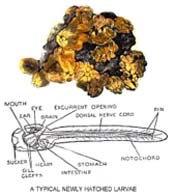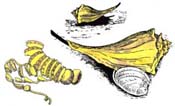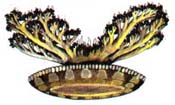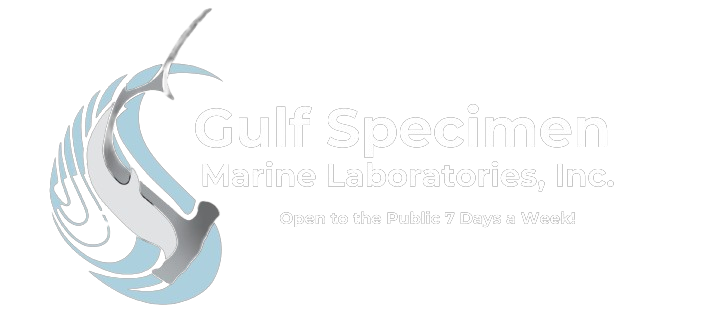 |
Leathery Sea Squirt – Styela plicata, Jets out water from its siphon when handled. Growing abundantly on wharf piling and shell bottoms, it feeds on plankton, sucking it through two openings, filtering it out through one, and expelling the empty water through the other. Its outer covering or "test" contains cellulose. Subphylum: Urochordata, Class: Ascidiacea |
 |
Left Handed Whelk – Busycon perversum, A friend of oysters. It devours many of the conchs that drill through the thick shells of oysters. While almost all other large conchs have a right hand rotation, this one spirals to the left. They stay buried in the sand by day, and emerge to feed at night on many species of clams. Their long strings of disc-shaped egg cases are commonly found washed up on beaches in the Spring. Class: Gastropoda, Family: Melongenidae/conchs & whelks |
 |
Lettered Olive Snail – Oliva sayana, Olive snails live in the sand, coming out at night to hunt mole crabs, coquina clams, and other small crustaceans and mollusks. They are named for the reddish-brown v shapped markings on their smooth, shiny shells. They are a very common snail along the Gulf and Atlantic coasts. Class: Gastropoda, Family: Olive Shells |
 |
Mangrove "Upsidedown" jellyfish – Cassiopea xamachana, A beautiful brown and white jellyfish found by the thousands among the roots of mangroves in the southern Gulf of Mexico, Carribbean, and other tropical waters. They gracefully pulsate through the water, landing upside down on the muddy bottom sediment to expose the symbiotic algae in their tissues to the sun. Class: Scyphozoa |
| « Previous | Next » |




